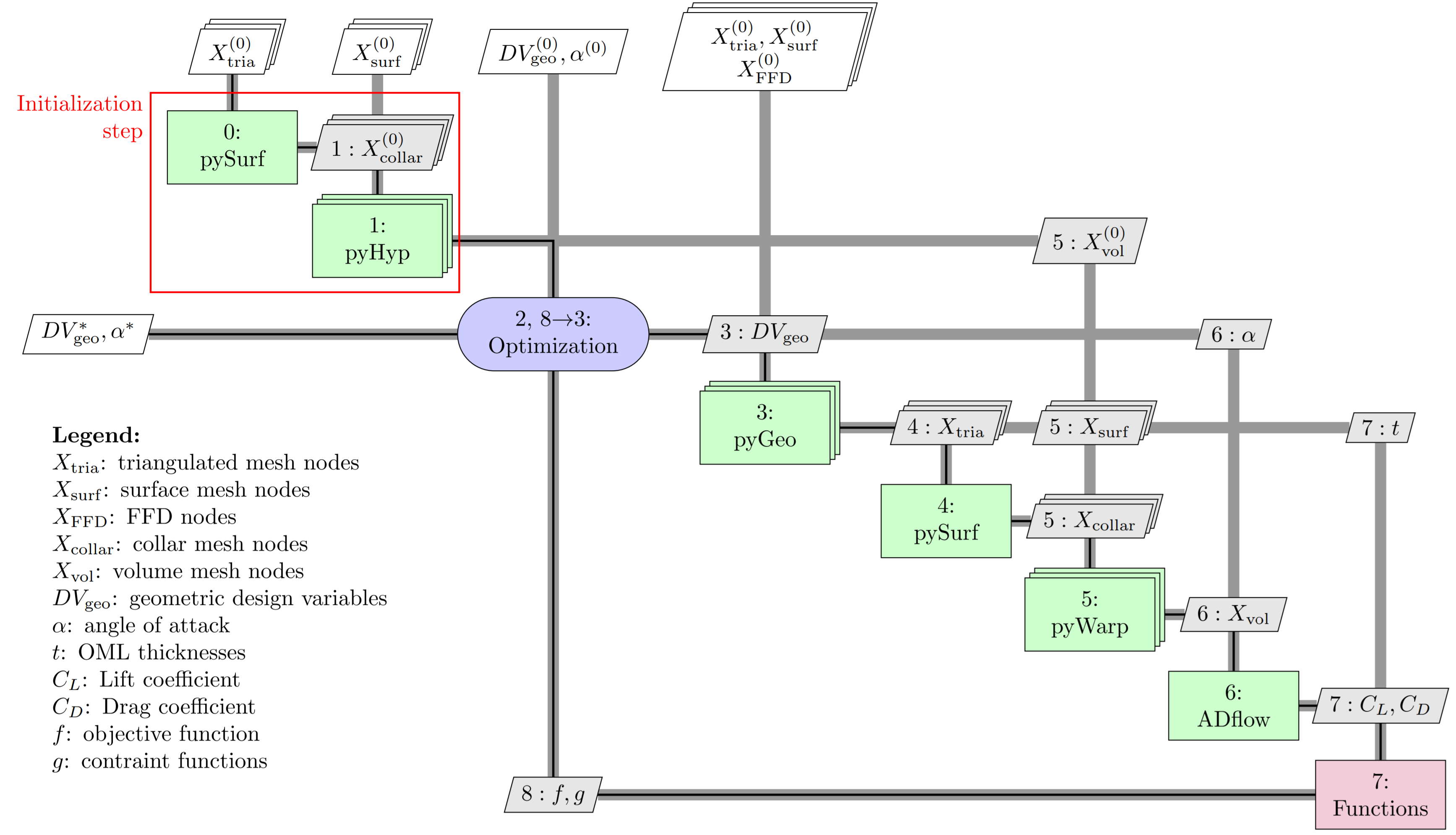pyHyp uses hyperbolic volume mesh marching schemes to extrude structured surface meshes into volume meshes. pyHyp is used as a preprocessing step in the geometry and mesh-creation process prior to an optimization.
Please see the documentation for installation details and API documentation.
To locally build the documentation, enter the doc folder and enter make html in terminal.
You can then view the built documentation in the _build folder.
If you use pyHyp in any publication for which you find it useful, please cite this paper.
N. Secco, G. K. W. Kenway, P. He, C. A. Mader, and J. R. R. A. Martins, “Efficient Mesh Generation and Deformation for Aerodynamic Shape Optimization”, AIAA Journal, 2021. doi:10.2514/1.J059491
@article{Secco2021,
title = {Efficient Mesh Generation and Deformation for Aerodynamic Shape Optimization},
author = {Ney Secco and Gaetan K. W. Kenway and Ping He and Charles A. Mader and Joaquim R. R. A. Martins},
doi = {10.2514/1.J059491},
journal = {AIAA Journal},
year = {2021}
}
pyHyp takes structured surface meshes and extrudes them into structured volume meshes. This is done as a pre-processing step. Generally, the surface meshes come from ICEM. The pyHyp-generated volume meshes are then used in ADflow to perform CFD. An example XDSM for an optimization setup that uses pyHyp is shown below.
Copyright 2019 MDO Lab. See the LICENSE file for details.
